I have a 12V DC-powered SBC to mount inside a metal case. How important is it that I connect its ground(?) to the metal case on the interior? How is this going to protect against ESD events?
From my understanding, whenever I touch the metal case, will I not be "exchanging" (thus equalizing) charges? Wouldn't connecting the case to the ground of the PCB inside allow the flow of this charge within the PCB? Also, would that not expose me to any kind of danger from the current flowing within the board, as the typical 12V AC/DC adapter doesn't have a connection to the mains ground, from what I see.
I am a bit confused because I do not know how important it is to actually do the grounding, plus I don't really know how exactly to do it. Do I just find the ground pins and connect it through some wiring to some random point on the case?
(This looks like the case, with the 4 screws at the corners, which is where I will mount the board that looks like this)
